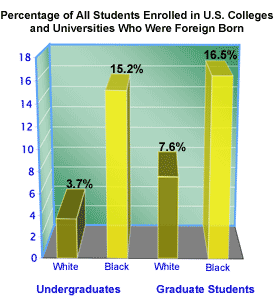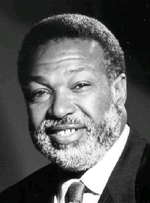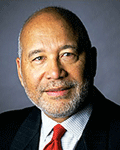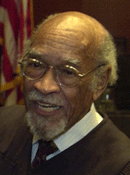Large Percentage of Black Students at U.S. Colleges and Graduate Schools Are Foreign Born
Data obtained by JBHE from the U.S. Census Bureau shows that a significant percentage of all black students in K-12 schools, in college, and in graduate school have parents that were not born in the United States. Moreover, a very large percentage of black college and graduate students are foreign born.
Here are the figures: In 2003, 13.6 percent of all black students in K-12 education in the United States had at least one parent who was born in a foreign country. This is almost double the rate for whites. Yet only 3.5 percent of black children in K-12 education in the United States were born outside this country. Still this is more than double the rate for whites.
The percentage of foreign-born blacks rises significantly when we examine enrollments at the college and graduate school level. For undergraduate black students in 2003, 22.2 percent had at least one parent born outside of the United States. More than 15 percent of all black undergraduate students enrolled at U.S. colleges and universities were born in a foreign land. This is four times the rate for whites. Less than 4 percent of white undergraduates were foreign born.
At the graduate level, 22.8 percent of the enrolled black students had one or both parents who were foreign born. For enrolled black graduate students, 16.5 percent, or one of every six, were born outside the U.S. For whites, 7.6 percent of all graduate students were foreign born.
The data strongly suggests that recent black immigrants to this country are far more likely than native-born African Americans to enroll in college. There are several possible explanations. Recent immigrants tend to be highly motivated individuals who came to this country to better their economic prospects. Therefore, they are more likely than native-born blacks to seek higher education.

Many members of this foreign-born group may have backgrounds from middle- or upper-class families whose parents can afford to send them to college in the United States. Also, many recent immigrants from Africa or predominantly black nations of the Caribbean have not suffered through a lifetime of racial discrimination and hostility. For many African Americans, growing up in a still somewhat racist society can have a negative psychological impact that dampens ambition and at times discourages efforts to try to improve one’s station in life.

University of Washington Struggling With Racial Diversity Under the Constraints of Initiative 200
In 1998 voters in Washington State passed Initiative 200, which banned the use of race in college admissions decisions. The next year black freshman enrollments at the University of Washington, the flagship campus in Seattle, dropped by 40 percent. Slowly black freshman enrollments began to rebound and increased each fall until this year. In the fall of 2005 the number of black freshmen dropped to 118, the lowest level since 1999.
Blacks make up 2.8 percent of the student body at the University of Washington. This is only slightly below the percentage of blacks in the state’s population, which stands at 3.2 percent. But blacks are 8.4 percent of the population of the city of Seattle and make up 22 percent of all students in the city’s public school system.
Blacks make up 1.7 percent of the tenure-track faculty at the University of Washington.

  |
“Casting my mind back over four decades with a big department at University College London, I cannot recall teaching (out of the many thousands I came into classroom contact with) a single black Caribbean student.”
— John Sutherland, Emeritus Lord Northcliffe Professor of Modern English Literature at University College London, in the London Guardian, 1-11-2006
|
The University Athletic Programs Rated Best for Racial Diversity
The Laboratory for Diversity in Sport at Texas A&M University in College Station has recognized 10 large universities for their excellence in achieving racial, ethnic, and gender diversity in their athletic programs. Schools were rated in six different categories: diversity strategy, graduation rate of black male student athletes, graduation rate of black female student athletes, Title IX compliance, gender diversity in athletic employment, and racial diversity in athletic employment.
The 10 universities rated highest in this analysis are the Arizona State University, Temple University, the University of Arizona, the University of Buffalo, the University of Louisiana at Monroe, the University of Nevada, the University of Tulsa, the University of Washington, the University of Wisconsin, and Washington State University.

New Online Resource on Black History in Classical Music
A new online resource on blacks’ contributions to classical music has recently been launched at http://www.AfriClassical.com. The site is the project of William J. Zick, a white man who has retired from positions as an administrative law judge and as a training officer for the Michigan Department of Civil Rights. He was assisted in the establishment of the Web site by Professor Dominique-Rene de Lerma of Lawrence University in Appleton, Wisconsin.
The Web site includes biographical information on 52 people of African descent who have made an impact on the world of classical music. Included among the entries are Le Chevalier de Saint-George, a composer and violinist who played music with Marie-Antoinette, and George Augustus Polgreen Bridgetower, a violinist who had a sonata dedicated to him by Ludwig van Beethoven.

The University of Richmond

Director of Common Ground
The University of Richmond in Richmond, VA, is a private, highly selective residential university with a national and international profile. It is noted for its challenging academic programs, excellent facilities, commitment to undergraduate education, and strong resource base, including an endowment of over $1.2 billion dollars. An ambitious 10-year strategic plan provides a strong sense of momentum for the future. Richmond has five schools (Arts and Sciences, Business, Leadership Studies, Law, and Continuing Studies) with a full-time undergraduate enrollment of 3200 students.
This newly created position will serve to lead our campus community in an exciting initiative that aims to establish inclusive diversity as a permanently embedded value in university culture. The Director will be responsible for establishing vibrant educational and co-curricular programming that brings individuals of all demographic and ideological identities together in ways that serve to reinforce understanding and respect for each individual's unique characteristics. More information about the Common Ground Initiative may be found at http://commonground.richmond.edu.
Desirable characteristics include the following: a passion for working with minority and majority students to promote their personal development; experience in offering workshops that develop multicultural competence for members of the campus community; success in obtaining
external funding for innovative programs; ability to work collaboratively with faculty in developing curricular and pedagogical support for the objectives of Common Ground; experience in managing budgets, personnel, strategic planning, and program development.
Preferred qualifications include a terminal degree; research background related to issues of diversity; strong communication, managerial, analytical, and organizational skills. Individuals with non-academic backgrounds will be considered if their training, experience, and accomplishments demonstrate high potential for success in a college environment.
To obtain more information or to apply for this position go to www.urjobs.org.
The University welcomes applications from diverse candidates and candidates who support diversity.
EOE
Nearly 18,000 Young Blacks Are Enrolled in Undergraduate Programs at the Nation’s 30 Highest-Ranked Universities
JBHE calculations from Department of Education data find that in 2004 there were 17,787 black undergraduates enrolled at the nation’s 30 highest-ranked universities. This large cadre of academically talented black youth is a solid core of intellectual firepower. It includes those who will be among our nation’s leaders in the years to come.
Among the 30 highest-ranked universities, the University of Michigan had the largest number of black undergraduates with 1,887. The University of North Carolina at Chapel Hill, the University of Virginia, and the University of Southern California were the only other institutions among the 30 highest-ranked universities that enrolled more than 1,000 black undergraduates.
At the other end of the scale, there were only 10 black undergraduates at the California Institute of Technology. Both Rice University and the University of Chicago had fewer than 200 black undergraduates.
The University of Michigan’s leadership in enrolling black students will be in jeopardy if voters in the state pass the Michigan Civil Rights Initiative this coming November. The referendum, being pushed by Ward Connerly’s American Civil Rights Institute, would ban race-sensitive admissions at all state-operated universities in Michigan.

Benedict College Wins the Lottery
 Charlie W. Johnson of Louisville, Kentucky, is chairman of the board of trustees of Benedict College, a historically black institution in Columbia, South Carolina. Johnson, a former defensive end for the National Football League’s San Francisco 49ers, is a wealthy businessman who made a fortune in the trucking business after his football playing days were over. Charlie W. Johnson of Louisville, Kentucky, is chairman of the board of trustees of Benedict College, a historically black institution in Columbia, South Carolina. Johnson, a former defensive end for the National Football League’s San Francisco 49ers, is a wealthy businessman who made a fortune in the trucking business after his football playing days were over.
Despite his wealth, Johnson is known to play the Powerball Lottery. And earlier this month he won $200,000 by matching five of the six numbers drawn. Had he matched the sixth number, the jackpot would have totaled $15 million. After learning of his good fortune, Johnson had his lottery winnings sent directly to Benedict College. The college is going to use the money for the completion of its new football stadium which will be named for Johnson. Johnson previously had donated $1 million for the stadium fund.

Fisk University Looks to Raise Money by Selling Art It Is Not Supposed to Sell
In 1949 artist Georgia O’Keeffe, known for her large paintings of flowers, donated her husband’s extensive art collection to Fisk University, the highly regarded historically black educational institution in Nashville, Tennessee. The 101-piece collection, which included many of O’Keeffe’s paintings, was donated with several conditions. The recipient was required to give the public access to the collection and also to promote the study of art. The agreement also stipulated that the color of the walls in the gallery in which the art was displayed had to be white. One final requirement was that Fisk could not “at any time sell or exchange any of the objects in the collection.”
 Now more than half a century later, Fisk University wants to sell two pieces from the collection valued at about $20 million. Fisk hopes to use the money for new construction projects, endowed teaching positions, and to improve security for the remaining works of the collection. Fisk contends that it cannot properly maintain the collection with its available funds. In a filing with the chancery court Fisk states that to "secure and maintain the collection is overly burdensome for an institution in its fiscal condition." Now more than half a century later, Fisk University wants to sell two pieces from the collection valued at about $20 million. Fisk hopes to use the money for new construction projects, endowed teaching positions, and to improve security for the remaining works of the collection. Fisk contends that it cannot properly maintain the collection with its available funds. In a filing with the chancery court Fisk states that to "secure and maintain the collection is overly burdensome for an institution in its fiscal condition."
Renowned historian John Hope Franklin, a graduate of Fisk, believes the university is doing the right thing. "The need for Fisk to increase its capacity to fulfill its mission is more important than any single asset that the university may hold, no matter how cherished that asset may be," Professor Franklin said.
But the Georgia O'Keeffe Foundation is attempting to block any sale, calling on the court to respect O'Keeffe's original conditions governing the donation.

Grants
 Yale University received a $100,000 grant from the Ford Foundation as part of the organization’s Difficult Dialogues program. Yale’s program will track changes in students’ attitudes before and after they take particular courses. One of the Yale courses that will be part of the program is Black and Jewish Community Politics taught by Khalilah Brown-Dean, an assistant professor of political science at Yale who helped developed the Yale Difficult Dialogues program. A graduate of the University of Virginia, Professor Brown-Dean holds a master’s degree and a Ph.D. in political science from Ohio State University. Yale University received a $100,000 grant from the Ford Foundation as part of the organization’s Difficult Dialogues program. Yale’s program will track changes in students’ attitudes before and after they take particular courses. One of the Yale courses that will be part of the program is Black and Jewish Community Politics taught by Khalilah Brown-Dean, an assistant professor of political science at Yale who helped developed the Yale Difficult Dialogues program. A graduate of the University of Virginia, Professor Brown-Dean holds a master’s degree and a Ph.D. in political science from Ohio State University.
The Motorola Foundation announced a $250,000 grant to help the three black universities in New Orleans recover from the devastation of Hurricane Katrina. The money earmarked for Dillard University, Southern University, and Xavier University will be used to help rebuild mathematics, science, and technology programs at the universities.

|
Black Student College Graduation Rates Inch Higher
The nationwide graduation rate for all black students at the more than 320 large universities that make up Division I of the National Collegiate Athletic Association increased from 40 percent in 2004 to 42 percent in 2005. The graduation rate for white students at these schools increased from 61 percent to 62 percent. Therefore, the graduation rate gap decreased by one percentage point. But this small improvement does not detract from the fact that the racial college graduation rate gap remains very large.
If we include data on gender, we find that over the past year the college graduation rate for black men increased from 34 percent to 35 percent. For black women, the college graduation rate increased from 45 percent to 46 percent.

Note: The graduation rate is determined by comparing the number of students who entered a particular institution with those who earned their four-year degree at the same institution within six years

College Financial Aid Increasingly Benefiting the Wealthiest Students
A new study by Education Sector, a nonprofit Washington, D.C.-based think tank, finds that the nation’s wealthiest college students have seen the largest increases in financial aid in recent years from private colleges and universities. According to the study, in 1993 private colleges and universities gave financial aid to 53 percent of all students whose family income fell in the lowest quartile of all students. By the year 2000, 56 percent of all students from this low-income quartile received financial aid. Black students make up a disproportionate percentage of students in this income quartile.
In contrast, in 1993, 35 percent of students in the highest-income quartile, a group that is predominantly white, received some financial aid from private colleges and universities. By the year 2000, 51 percent of the college students from families in the highest-income quartile received financial aid.
In dollar terms, the average financial aid award for students in the low-income quartile increased by $700 in the 1993 to 2000 period. For students in the highest-income quartile, financial aid awards increased by an average of $1,300 during this seven-year period.

Norfolk State University Professor Facing Trial for His Life in Ethiopia
In 2005 Yacob Hailemariam, a professor of business law at Norfolk State University, the historically black educational institution in Virginia, resigned his faculty position in order to return to his native Ethiopia to run for a seat in the country’s new parliament.
Last May he was overwhelmingly elected to parliament but the ruling party, which was in charge of counting the votes, claimed that it had won 60 percent of the vote. It then instituted measures to consolidate almost all power of the state in the office of the prime minister. In protest, Hailemariam and several other opposition leaders refused to take their seats in parliament. They were subsequently jailed, kept in solitary confinement, and charged with treason.
Then in late December, Hailemariam was charged with fostering genocide. Ironically it was Hailemariam who was the chief prosecutor for the United Nations International Criminal Tribunal investigating genocide against nearly one million Rwandans.
If convicted on either charge Hailemariam could be sentenced to death.

College in Georgia Receives Major Donation of African-American Art
The Savannah College of Art and Design recently received a donation of 70 pieces of African-American art from the collection of Linda and Walter Evans. Walter Evans is an accomplished African-American surgeon who began collecting art in 1979.

Piano Lesson
by Romare Bearden
The donation, valued between $7 million and $10 million, includes works from Jacob Lawrence, Romare Bearden, and Aaron Douglas. As part of the agreement, the college will establish the Walter O. Evans Center for African-American Studies. The mission of the new center will be to foster an appreciation for African-American art and literature among young children.
Blacks make up about 5 percent of the 5,700-member student body at the Savannah College of Art and Design.

The Importance of Affirmative Action in Admissions to U.S. Medical Schools
The competition for places in U.S. medical schools is among the most intense in higher education. Great emphasis is placed on scores on the Medical College Admission Test and on an applicant’s grade point average in college, particularly in science courses.
In 2005 the mean combined score for black students who took the Medical College Admission Test was 21.2. (Each of the three sections of the MCAT test is scored on a scale of 1 to 15.) For whites, the mean score on the combined three portions of the MCAT test was 28.5. Therefore, the white score was about 18 percent higher than the mean score for blacks.
The mean total college grade point average for black applicants to medical school in 2005 was 3.18. For whites, the average GPA was 3.54.
If we examine grades in the all-important science courses, the mean black GPA was 2.99. For whites, the figure is 3.44.
It is clear that, in the intense competition for places at medical schools in the United States, were these institutions to choose their students solely on test scores and college grades, blacks would be at a severe disadvantage in competition with the highest-scoring whites. Almost no blacks would be admitted to the nation’s most selective schools.
The test results highlight the importance of continuing affirmative action admissions at U.S. medical schools. Without a continuing flow of blacks and other minorities into U.S. medical schools, inner-city areas and predominantly black rural areas would be faced with severe shortages of medical personnel. This would create a public health crisis in the United States.

Embattled President of Indiana University System Announces His Retirement
 Adam W. Herbert Jr., an African American who is president of the Indiana University system, announced last week that he would not seek to renew his contract which expires in 2008. This past November the Faculty Council at the flagship campus of Indiana University in Bloomington passed a resolution expressing no confidence in Dr. Herbert. The faculty alleged that Dr. Herbert was inaccessible and had jeopardized the university’s ability to win a major research grant. They also criticized his failure to appoint a system-wide chancellor to serve as chief academic officer for the university’s eight campuses. Adam W. Herbert Jr., an African American who is president of the Indiana University system, announced last week that he would not seek to renew his contract which expires in 2008. This past November the Faculty Council at the flagship campus of Indiana University in Bloomington passed a resolution expressing no confidence in Dr. Herbert. The faculty alleged that Dr. Herbert was inaccessible and had jeopardized the university’s ability to win a major research grant. They also criticized his failure to appoint a system-wide chancellor to serve as chief academic officer for the university’s eight campuses.

Jeb Bush Presents Plan to Increase Black Enrollments at Florida’s State-Operated Universities
 Under Jeb Bush’s One Florida plan, state-operated colleges and universities in Florida are not permitted to use race as a positive factor in the admissions process. Since 1999 the percentage of blacks in the first-year classes at Florida’s public four-year universities has dropped from 17.6 percent to 14.1 percent. This fall, six of the 11 state-operated four-year universities in Florida saw a drop in black enrollments. This academic year there are 626 fewer black freshmen enrolled at Florida’s state-operated universities than there were a year ago. Under Jeb Bush’s One Florida plan, state-operated colleges and universities in Florida are not permitted to use race as a positive factor in the admissions process. Since 1999 the percentage of blacks in the first-year classes at Florida’s public four-year universities has dropped from 17.6 percent to 14.1 percent. This fall, six of the 11 state-operated four-year universities in Florida saw a drop in black enrollments. This academic year there are 626 fewer black freshmen enrolled at Florida’s state-operated universities than there were a year ago.
Governor Bush recently announced that in an effort to boost black enrollments state financial aid for low-income families would be increased by 38 percent to $138 million annually. But the legislature is expected to increase merit-based financial aid by a similar level. In Florida merit-based financial aid is more than double the aid set aside for low-income families.

Four HBCUs in Effort to Provide 15 Million Textbooks for African Schoolchildren
At a recent visit to Accra Teacher Training College in Ghana’s capital city, U.S. first lady Laura Bush announced a major effort to provide up to 15 million textbooks for African schoolchildren. Using money provided by USAID, four black colleges and universities, in conjunction with Chicago State University and the University of Texas at San Antonio, are producing and distributing school textbooks in the African nations of Ghana, Senegal, Zambia, Tanzania, South Africa, and Ethiopia. The textbooks will be prepared and manufactured in Africa.
The participating black colleges and universities are Elizabeth City State University, Alabama A&M University, Tougaloo College, and South Carolina State University.

President of Morris Brown College Steps Down
Samuel Jolley, who took over as president of Morris Brown College after the historically black institution lost its accreditation in 2002, has resigned his position. The college, which once had enrollments of 2,700 students and more than 100 faculty members, now has 55 students and nine faculty members. During his tenure Jolley had launched a $10 million capital campaign but only $1.2 million has been raised.

  |
12.3% Black percentage of all public elementary school teachers in the United States in 1982.
8.7% Black percentage of all public elementary school teachers in the United States in 2004.
source: U.S. Equal Employment Opportunity Commission
|
New York Governor Looks to Reduce State Financial Aid to Low-Income Students Enrolled at For-Profit Colleges
 Lame-duck Governor George Pataki of New York has proposed new restrictions on financial aid for low-income students at for-profit colleges in the state. A large number of these low-income students are black or Hispanic. Under the Pataki plan, which will trim hundreds of millions of dollars from the state’s financial aid budget, students would not be eligible for financial assistance from the state until they have demonstrated that they are academically qualified by completing several credits at the schools. Lame-duck Governor George Pataki of New York has proposed new restrictions on financial aid for low-income students at for-profit colleges in the state. A large number of these low-income students are black or Hispanic. Under the Pataki plan, which will trim hundreds of millions of dollars from the state’s financial aid budget, students would not be eligible for financial assistance from the state until they have demonstrated that they are academically qualified by completing several credits at the schools.
These new requirements will greatly reduce the number of students who enroll at these for-profit colleges, because, without the tuition assistance plans, many of these low-income students would not be able to afford the cost of a college education and would not be able to enroll.

In Memoriam
 Theodore McMillian (1919-2006), the great-grandson of slaves and the first black judge on the U.S. Court of Appeals for the Eighth Circuit in St. Louis, died this past week after undergoing kidney dialysis treatment. He was 86 years old. Theodore McMillian (1919-2006), the great-grandson of slaves and the first black judge on the U.S. Court of Appeals for the Eighth Circuit in St. Louis, died this past week after undergoing kidney dialysis treatment. He was 86 years old.
Judge McMillian worked as a janitor to pay his way through Lincoln University, the historically black institution in Jefferson City, Missouri. After graduating with a degree in mathematics, he took a job as a Pullman porter while attending law school at St. Louis University. After graduating first in his class, no established law firm in St. Louis would hire him. When he started his own practice, no office building in the downtown area would rent him space.
In 1953 McMillian became the first black state prosecutor in Missouri. Three years later he was appointed to a state judgeship. He was appointed to the federal bench by President Carter in 1978. He took senior status in 2003.

Appointments
Patrick Liverpool was named interim dean of the College of Business at Florida A&M University. Liverpool was on the board of the Association to Advance Collegiate Schools of Business International, an accrediting agency. He also taught or held administrative posts at the business schools of Howard, Fisk, Delaware State, Virginia State, and Virginia Union universities.
The school has been without a full-time dean for nearly three years. The search for a permanent dean is currently under way. 
|



